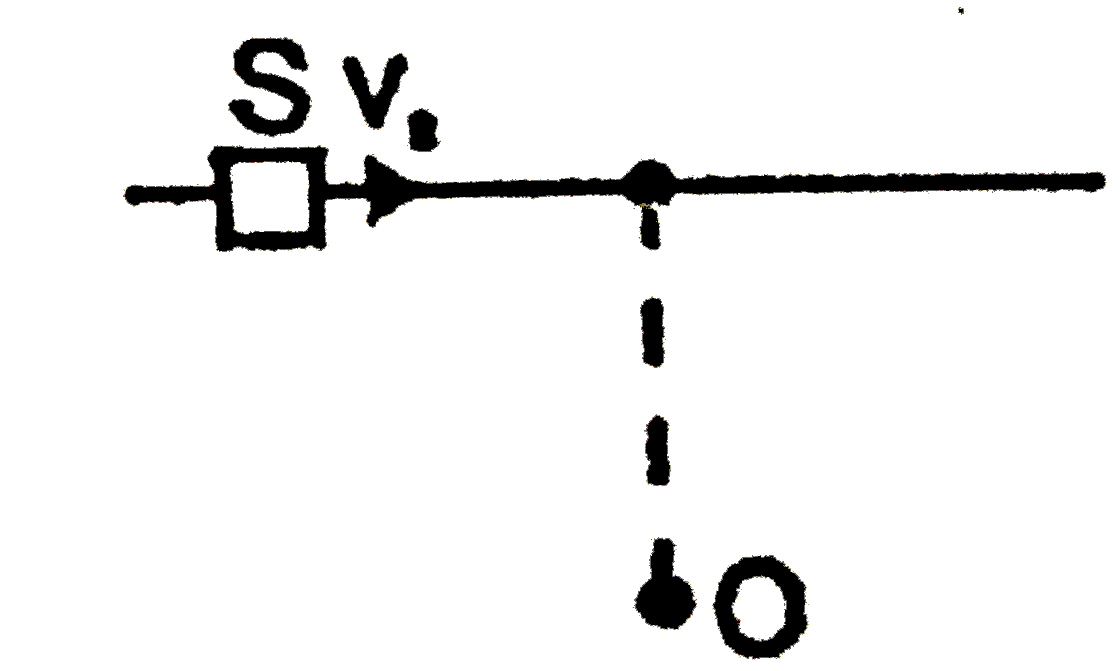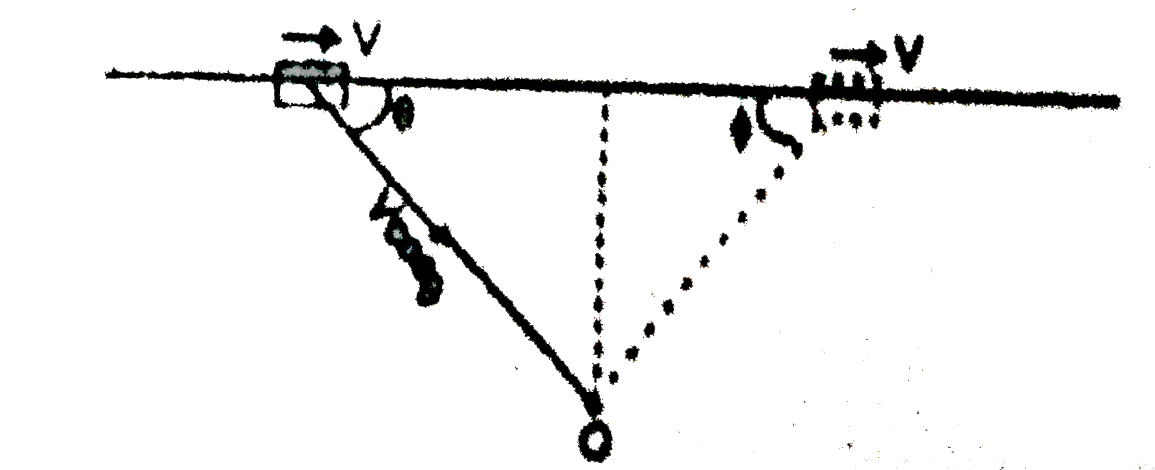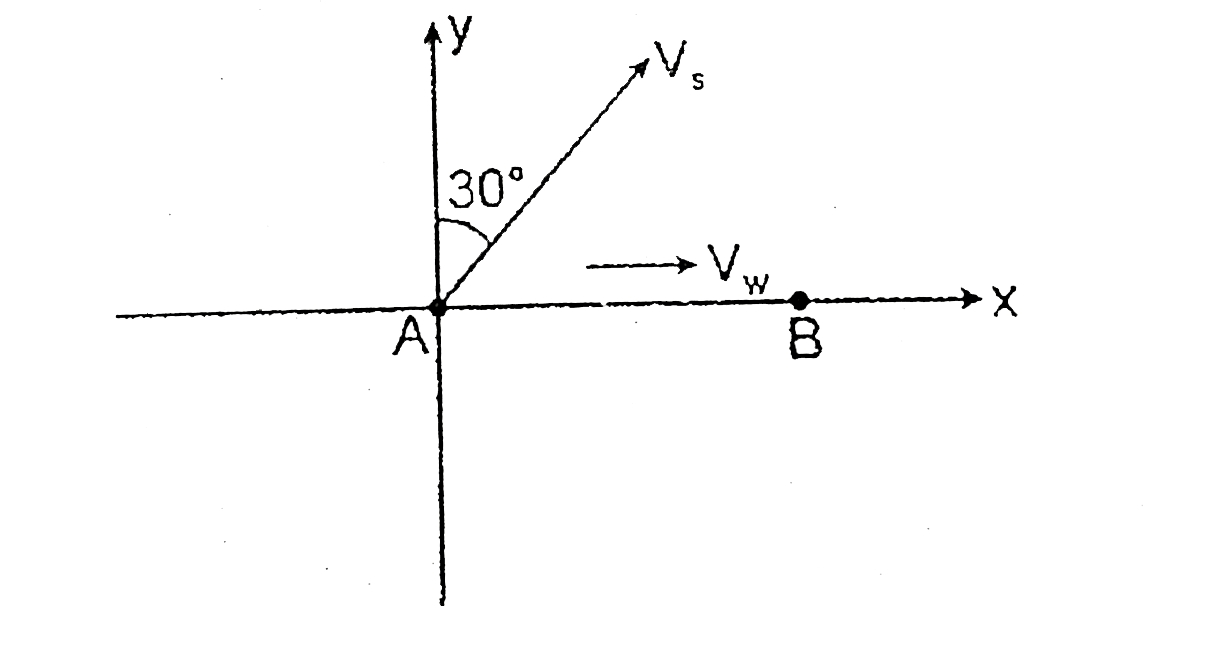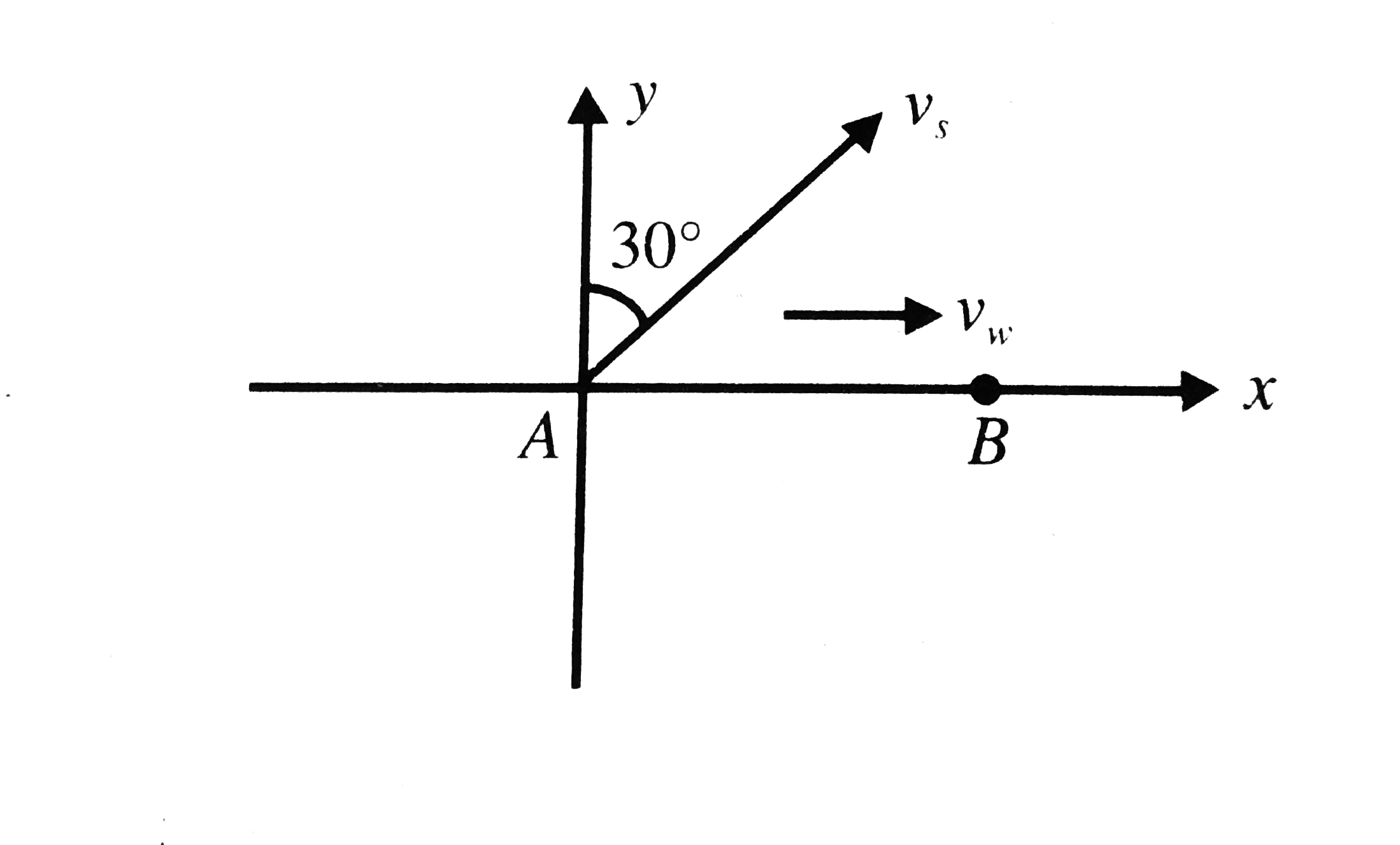The source (S) of sound is moving constant velocity v0 as shown in diagram. An observer O listens to the sound emmited by the source. The observed frequency of the sound

continuously decreases
continuously increases
first decreases then increases
first increases then decreases.
The correct Answer is:A
From figure, the velocity of approach (Vcosθ) decreases as the source comes closer (as θ increases). And the velocity of separation also increases as ϕ will decreases. Hence the frequency of should as heard by the observed decreases continuously.

Topper's Solved these Questions
- SOUND WAVESBOOK - RESONANCECHAPTER - SOUND WAVESEXERCISE - Solved Examples
24 Videos
- SOUND WAVESBOOK - RESONANCECHAPTER - SOUND WAVESEXERCISE - Board Level Exercise
33 Videos
- SIMPLE HARMONIC MOTIONBOOK - RESONANCECHAPTER - SIMPLE HARMONIC MOTIONEXERCISE - Exercise
28 Videos
- STRING WAVESBOOK - RESONANCECHAPTER - STRING WAVESEXERCISE - Exercise
32 Videos
Similar Questions
Velocity of sound is v. Source and observer move towards each other with velocities Vs and V0 respectively. Wind is blowing with a velocityvm in the direction opposite to the propagation of sound, n is the frequency of the sound. The apparent frequency of the sound heard by the observer is :-
View SolutionA source of sound is moving with a velocity of 50ms−1 towards a stationary observer.The observer measures the frequency of sound as 500 Hz.The apparent frequency of sound as heard by the observer when source is moving away from him with the same speed is (Speed of sound at room temperature 350 ms−1
View Solution
Knowledge Check
A source of sound moves towards an observer
AThe frequency of the source is increasedBThe velocity of sound in the medium is increasedCThe wavelength of sound in the medium towards the observer is decreasedDThe amplitude of vibration of the particle is increasedA source of sound moves towards an observe.
AThe frequency of the source is increasedBThe velocity of sound in the medium is increasedCThe wavelength of sound in the medium towards the observer is decreasedDThe amplitude of vibration of the particle is increasedIn the figure shown a source of sound of frequency 510Hz moves with constant velocity vS=20m/s in the direction shown. The wind is blowing at a constant velocity vW=20m/s towards an observer who is at rest at point B. The frequency detected by the observer by corresponding to the sound emitted by this source at initial position A, will be (speed of sound relative to air =330m/s).
 A485HzB500HzC512HzD525Hz
A485HzB500HzC512HzD525Hz

In the figure shown, a source of sound of frequency 510 Hz moves with constant velocity vS=20ms in the direction shown. The wind is blowing at a constant velocity vW=20ms towards an observer who is at rest at point B. corresponding to the sound emitted by the source at initial position A, the frequency detected by the observer is equal to (speed of sound relative to air is 330ms)
View SolutionA source of sound is moving with a velocity of 50ms−1 towards a stationary observer.The observer measures the frequency of sound as 500 Hz.The apparent frequency of sound as heard by the observer when source is moving away from him with the same speed is (Speed of sound at room temperature 350 ms−1
View SolutionIf a source of frequency n moving with velocity v crosses a stationary observer, then the change in the frequency of sound heard by the observer will be (velocity of sound = V)
View SolutionA source of frequency n is moving with a uniform velocity v towards a stationary observer. If the velocity of sound is V, then the change in frequency would be -
View SolutionAn observer is moving towards the stationary source of sound, then
View Solution